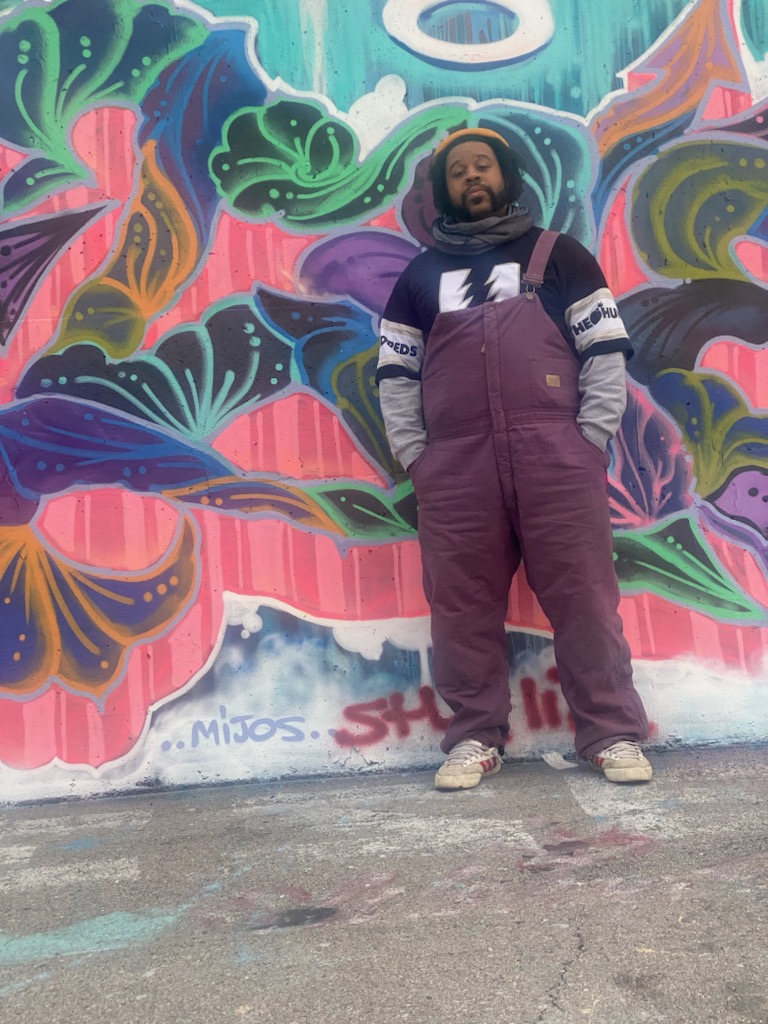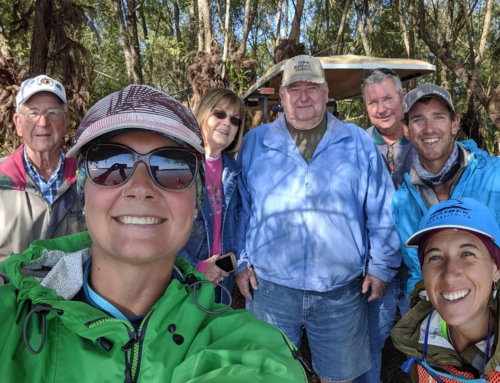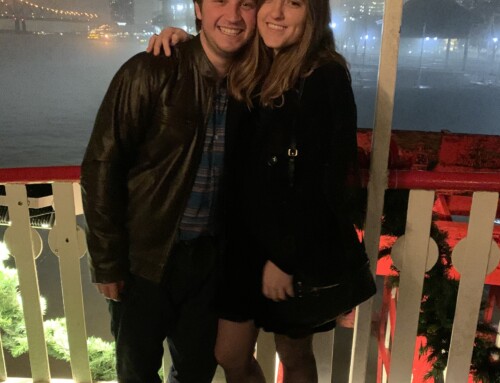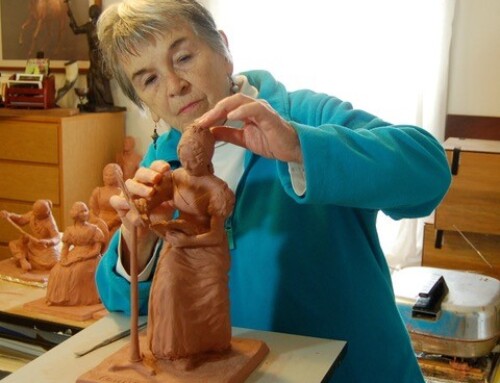Some experiences leave a lasting impression. For Jamaal Hodge, a childhood trip to the Mississippi River in St. Louis and a moment, a first glimpse at striking pieces of art, catalyzed an interest in art that shapes his life to this day.
That first trip to the Mississippi had nothing to do with art, actually. His stepdad took him to the river to fish, to get to know each other, really. Jamaal was seven years old—had never been to the Mississippi before—and his stepdad was new to the family. His stepdad loved the outdoors and wanted his stepsons to develop the skills to fish and hunt.
They drove along the city’s flood wall until they found an opening they could pass through. On the bank of the Mississippi, he and his brother assembled their poles, their stepdad patiently correcting each mistake. They found worms for bait underneath rocks and learned how to get them on the hook. Jamaal found it boring at first. They’d spend a few hours at the river and he and his brother would leave empty-handed, while their stepdad reeled in five or six catfish.
“… it [fishing] requires a decent amount of patience, and I think that’s what he was trying to teach us.”
Their stepdad bought them fishing gear and slowly revealed a few secrets. “We ate every fish he caught. He taught us how to descale them. He taught us how to get the bone out of them. He actually taught us how to fillet them, too. It was my first time working with a knife as a child.”
His stepdad once caught a pregnant fish and threw it back. “It was one of my first memories of compassion I would say.”
They made those trips to the river for a good four years. “It [fishing] basically just taught me to observe my surroundings and to be present, ‘cause when you’re fishing, you have to be present. It’s just you and the river.”
That time next to the river did indeed bring them closer. “I got to see him as a human, not just my stepfather, and that was something beautiful that he gave us.” It helped Jamaal see him in an entirely new way. “It was the most peaceful I ever saw that man [when he was fishing]… He was at ease when he was fishing.”
Still, fishing isn’t the most prominent memory from those trips. “You drive down there [to the river], and you see this large wall of just graffiti and art, and this was my first interaction with graffiti.” The flood wall was decorated with graffiti that had been painted on the wall as part of the city’s annual festival known as Paint Louis. Artists from around the country flocked to St. Louis to turn a drab, grey concrete wall into a canvas covered with vibrant images.
Jamaal had already taken an interest in painting and drawing by then, but the scale and style of the art on the flood wall were entirely new and captured his attention. “I’m in awe, I’m captivated at this point… It’s like the first thing I remember of going to the Mississippi.”
“It was the first time I’d even seen so much color, like on anything.” The images popped against the gray concrete background and the factories and railroad tracks. Before they fished, he and his brother would walk along the wall to check out the art. When his mother came along, he’d show her his favorites.
“That wall means so much to me.” He fell in love with the angular forms of the letters and characters, the striking use of color, and the depth of the imagery. One eye-opening piece was done solely in different shades of blue.
“To this day, that is the main reason I started doing art. I do not consider myself an artist, but I do consider myself a creative. That is one of the key starts of me becoming creative and wanting to learn something, being passionate about learning something. It triggered that for me.”
Jamaal had a speech impediment when he was young and a learning disability. Words were not his thing. Fishing provided experiential learning, forced him to slow down. Graffiti art triggered a way for him to express himself.
Today, he’s a musician, albeit one who also sketches and paints at times, too. During an earlier stage of his music career, he sang in Carnegie Hall with a choir. Today he’s part of a music collective called Kin Folk that focuses on creating an ecosystem where musicians can support each other and thrive.
And those trips to the Mississippi River helped kick start it all. “Those are some of the most prominently memorable moments of my childhood… I have very fond memories of the Mississippi.”






